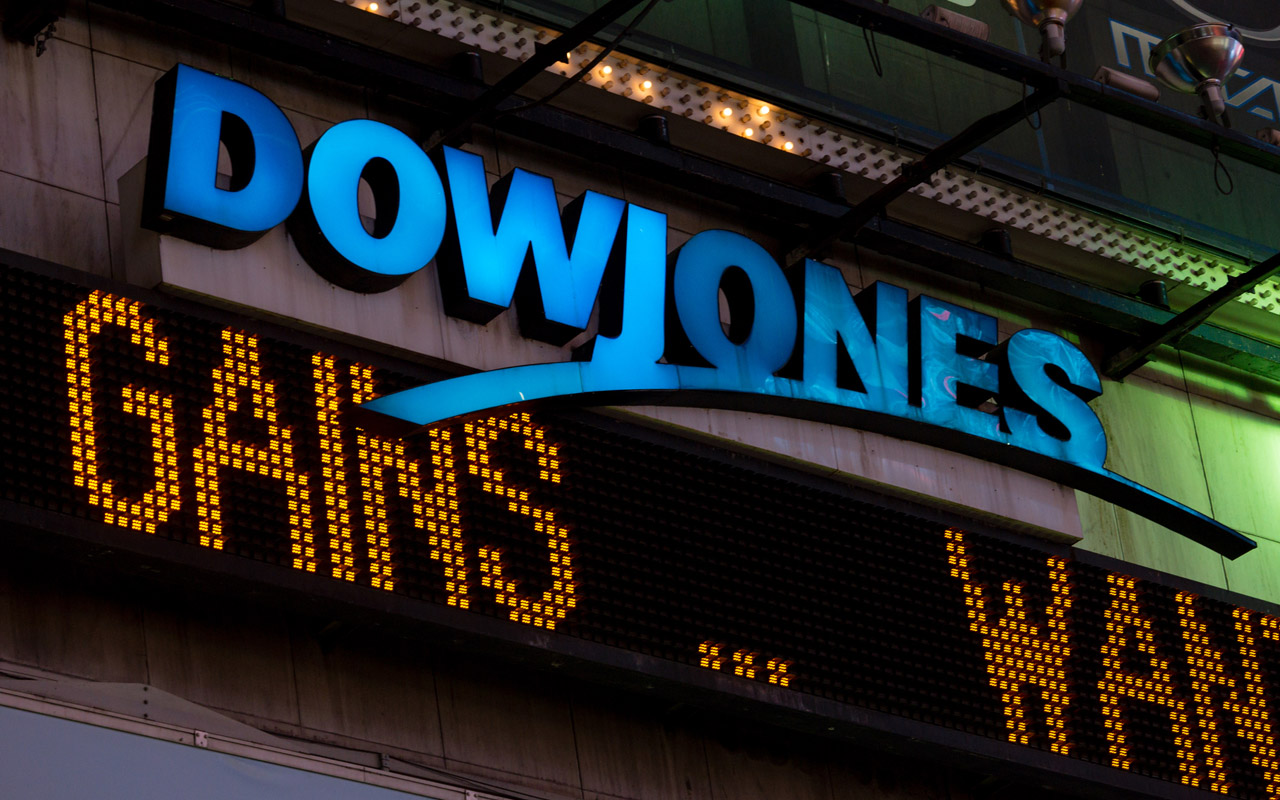7 Former Dow Jones Stocks That Survived "The Boot"
Once-great industrial giant General Electric (GE) was removed as a constituent of the Dow Jones Industrial Average in June 2018.


Once-great industrial giant General Electric (GE) was removed as a constituent of the Dow Jones Industrial Average in June 2018. Although GE was a component of the blue-chip index for 110 years, time finally caught up with it. The company never really made a full foray into the tech-centric modern era of manufacturing, and it lost ground as it lost relevancy.
That kind of decision can be tough on a stock. Not only does an army of index fund managers sell the stock to reconfigure their Dow-based investment pools, but the loss of an accolade such as being a Dow constituent can crimp investors’ perception of that company.
But Dow stocks getting the boot, while headline-worthy, isn’t unusual. On average, a Dow Jones component is replaced about once per year. And contrary to popular belief, it doesn’t have to serve as a kiss of death for a stock.
In fact, often times a stock performs very poorly before being removed from the Dow Jones Industrial Average … then is kicked out right before a major turnaround.
Here are seven former Dow Jones stocks that more than survived being removed from the industrial average. In each case, they thrived despite the decision – and you don’t have to go too far back in time to find these comeback kids.
Data is as of July 25, 2018. Dividend yields are calculated by annualizing the most recent quarterly payout and dividing by the share price.

HP Inc./Hewlett-Packard Enterprise
- Market value (HP): $37.9 billion
- Dividend yield (HP): 2.4%
- Market value (HPE): $23.8 billion
- Dividend yield (HP): 2.9%
- Exclusion Date: Sept. 20, 2013
Hewlett-Packard was removed from the Dow Jones Industrial Average in September 2013. A little more than two years later, it broke apart into two companies: HP Inc. (HPQ, $23.29) and Hewlett-Packard Enterprise (HPE, $15.48).
Both arms were struggling at the time of the removal. HP shares (to become HPQ shares two years later) lost nearly 80% of their value between 2010’s peak and 2012’s low, as the advent of high-powered smartphones and tablets negated the need for computers.
Regardless of which new company you use as a yardstick, however, Hewlett-Packard losing its status as a Dow component may have marked the beginning of a major capitulation and turnaround. The stock fell through October 2013 but made a decisive bottom that would lead to a multi-month rally. HPQ shares are now up 140% since being kicked out of the Dow, and though HPE shares have only been in existence since late 2015, they’re up 72% for that span.
The companies collectively just needed a little more time to adapt to the then-budding cloud computing industry, perfect their 3D printers and prepare for a revival of the PC market.

Bank of America
- Market value: $311.3 billion
- Dividend yield: 1.5%
- Exclusion Date: Sept. 20, 2013
- Bank of America (BAC, $31.07) isn’t a Dow Jones stock despite being the second biggest bank in the United States – top honors belong to JPMorgan Chase (JPM). It used to be, but it was axed along with HPQ in September 2013 and replaced by fellow financial-sector stock Goldman Sachs (GS).
The given explanation from Standard & Poor’s, which maintains the index, was the stock’s perpetually low price – a habit unbecoming of a blue chip.
Although Bank of America was escaping from the echo of 2008’s subprime meltdown, it wasn’t doing so as effectively as its peers. It failed the Federal Reserve’s so-called “stress test” in 2011, and though it passed the test in 2012 and 2013, neither time did the bank even bother requesting permission to maintain its tepid dividend. It just wasn’t making enough money.
And although BAC shares had fought their way back from an early 2009 low of $2.53, the price of $13.80 as of September 2013 still was miles away from the peak near $55 hit in 2006. BofA simply was being lapped by lesser banks.
Had Bank of America been allowed to remain in the Dow, however, the index’s value might be different. BAC shares have advanced roughly 115% since then, versus about 45% for Goldman Sachs and 65% for the Dow.

General Motors
- Market value: $52.4 billion
- Dividend yield: 4.0%
- Exclusion Date: June 8, 2009
The outcome of General Motors’ (GM, $37.65) removal from the Dow Jones Industrial Average is a tough one to measure.
The automaker lost its claim back in June 2009, when the fallout of aforementioned subprime meltdown finally proved torturous to the industry.
You’ll recall GM and its peers collectively tapped roughly $50 billion in emergency funding from the federal government; GM’s portion totaled around $11 billion. The company ended up filing bankruptcy in 2009 anyway, which is – broadly speaking – not something one would expect from a blue-chip outfit. GM emerged from Chapter 11 proceedings with a brand new version of its stock trading in late 2010. Since then, GM shares have gained about 14% from their post-bankruptcy-reissue price near $33. The modest gain, however, doesn’t fully reflect that last year’s operating profit of $9.9 billion was a record-breaker.
This year likely won’t be as robust, with the “peak auto” overhang still keeping growth in check. But it’s clear to see GM hasn’t exactly been hampered by its exclusion from the Dow.

Citigroup
- Market value: $180.5 billion
- Dividend yield: 2.5%
- Exclusion Date: June 8, 2009
Bank of America isn’t the only Big Four bank to be demoted from the Dow. Citigroup (C, $71.72) suffered the insult first, losing its place at the same time GM did … in June 2009, when the subprime loan implosion was in full swing.
By almost all measures, one can’t blame the Dow for kicking the bank out of the index. Shares lost a stunning 98% of their value between their late 2006 high and their early 2009 low. Although the stock appeared to have stopped bleeding by the middle of that year, the future still looked grim.
To the Dow’s credit, it was. Even with the meltdown six years in the rearview mirror, by 2014, Citigroup failed the Fed’s stress test for a second time in three years. Things just weren’t getting better.
Much like GM and Bank of America, Citigroup just needed more time to regroup. C shares are up more than 40% since the failed stress test in March 2014, and they’ve gained roughly 110% since falling from the ranks of the Dow stocks.
Citigroup still is nowhere near its 2006 peak price of $570, but that’s a huge return for investors that weren’t spooked by its removal.

Honeywell
- Market value: $118.3 billion
- Dividend yield: 1.9%
- Exclusion Date: Feb. 19, 2008
- Honeywell (HON, $158.02) was once a powerhouse provider of not just industrial equipment, but at-home appliances and gadgets, too. Odds are good that you’ve used a Honeywell-made thermostat at some point in your life.
The company wasn’t entirely prepared for the proliferation of low-cost, high-powered, consumer-oriented technologies, however. While it still was turning a profit at the time, it lost its status as a Dow Jones Industrial Average component in February 2008 because it had become the smallest of industrial companies, as measured by sales and profits.
Its removal also was a tacit reflection of something else going on around that time. As the index’s overseers explained at the time, “The role of industrial companies relative to the overall stock market has been shrinking in recent years.”
HON subsequently took its lumps, losing nearly 50% of its value over the course of the next 12 months; the recession certainly didn’t help.
In retrospect, however, pigeon-holing Honeywell as a relic industrial name may have been a mistake. Shares of HON have rallied a whopping 580% from a March 2009 low, as the company became a much more relevant name, melding parts and components with technology. Last year’s acquisition of Cavium, in fact, was described by CEO Matt Murphy as the creation of a “pure play” on industrial-level cloud computing and the industrial-oriented Internet of Things.

Altria
- Market value: $106.3 billion
- Dividend yield: 4.8%
- Exclusion Date: Feb. 19, 2008
Cigarette company Altria (MO, $57.85) was kicked out of the Dow at the same time Honeywell was – in February 2008 – and the decision wasn’t surprising.
Anti-smoking campaigns had been underway for years, even as far back as a decade ago, and were starting to get real traction. Moreover, at the time, Altria was in the midst of its spinoff of Philip Morris International (PM) and had already spun off Kraft Foods. With nothing but a dying cigarette business left, the proverbial writing was on the wall. Sooner or later, Altria had to go. As then-Dow Jones Indexes editor John Prestbo put it, “It isn’t the company it was when it was put in the Dow.”
But a funny thing happened on the road to oblivion. Altria found a way to keep winning new business, whether by acquisitions of rivals, a foray into e-cigarettes, or even stakes in the alcohol industry. It hasn’t been pretty. It hasn’t been easy. But Altria has more often than not kept the top and bottom lines growing since early 2008.
Shareholders willing to take the plunge in 2008 have reaped their rewards, too. MO shares are up 154% since being booted from the Dow, not including dividends.

International Paper
- Market value: $21.3 billion
- Dividend yield: 3.6%
- Exclusion Date: April 8, 2004
Since being kicked out of the Dow Jones Industrial Average in April 2004, shares of International Paper (IP, $53.04) have improved by about 25%, though they’ve returned a little more than 100% once you include dividends.
Not earth-shattering. But not the kiss of death, either.
It was a different time, or at least a situation, that prompted a different perspective. In 2004, while personal computers were becoming commonplace, broadband was still young and web-connected phones were practically nonexistent (save the BlackBerry). With a new tech-centric era then upon us, many thought simple basic materials like paper and cardboard would slowly fade away.
As it turns out, the advent of the internet as the centerpiece of our lives has given us room and reason to consume more paper than ever imaginable. (Thank you, Amazon.com!)
For the record, IP shares didn’t log that 30% gain in a straight line. International Paper shares lost 85% of their value between the time they were ousted and the early 2009 low, initially caught up amid a tepid paper-pricing environment then flushed out to sea by the “Great Recession.”
Whatever the case, the stock’s success wasn’t necessarily dependent on its inclusion in the Dow. Not only is IP up since that ill-fated day back in 2004, but the stock has rebounded by more than 1,600% since its early-2009 bottom. The company regrouped and was rebuilt just in time to ride a huge wave of economic growth.

The Others
Not every name bounces back after being booted from the Dow. Among the most noteworthy expellees that never really permanently recovered are AT&T (T); Alcoa (AA) and its spinoff Arconic (ARNC); Kraft, before it melded with Heinz to become Kraft Heinz (KHC); American International Group (AIG) – though its story is an exception to any norm, expelled in September of 2008 at the height of the subprime meltdown; and Sears (SHLD), just to name a few.
There’s also a handful of names such as Kodak and Bethlehem Steel; the former became part of Eastman Kodak (KODK) and the latter mostly faded away over time. Because of bankruptcies, spinoffs and other disruptions, it’s difficult to determine how their remnants perform for their present owners … if they’re even around in a form that matters.
The demise or poor performance of those companies, however, has little to do specifically with their status (or lack thereof) as a Dow name. In most of these cases, management was ill-prepared for the future, unable to handle looming changes largely brought on by technology.
In other words, former Dow stocks – just like current Dow stocks – should be judged on their merits and plausible prospects. No more, no less.
James Brumley was long T as of this writing.
Profit and prosper with the best of Kiplinger's advice on investing, taxes, retirement, personal finance and much more. Delivered daily. Enter your email in the box and click Sign Me Up.

-
 Nasdaq Takes a Hit as the Tech Trade Falters: Stock Market Today
Nasdaq Takes a Hit as the Tech Trade Falters: Stock Market TodayThe Dow Jones Industrial Average outperformed on strength in cyclical stocks.
-
 $100 Fee Turning Away Visitors from National Parks
$100 Fee Turning Away Visitors from National ParksDiscover how the new $100 fee will impact your experience visiting 11 of America's most popular parks.
-
 Is Mechanical Breakdown Insurance Better Than an Extended Car Warranty?
Is Mechanical Breakdown Insurance Better Than an Extended Car Warranty?More insurers are starting to offer mechanical breakdown insurance to new car owners. What is it and should you buy it?
-
 Nasdaq Takes a Hit as the Tech Trade Falters: Stock Market Today
Nasdaq Takes a Hit as the Tech Trade Falters: Stock Market TodayThe Dow Jones Industrial Average outperformed on strength in cyclical stocks.
-
 Dow Hits New High Then Falls 466 Points: Stock Market Today
Dow Hits New High Then Falls 466 Points: Stock Market TodayThe Nasdaq Composite, with a little help from tech's friends, rises to within 300 points of its own new all-time high.
-
 Dow, S&P 500 Rise to New Closing Highs: Stock Market Today
Dow, S&P 500 Rise to New Closing Highs: Stock Market TodayWill President Donald Trump match his Monroe Doctrine gambit with a new Marshall Plan for Venezuela?
-
 'Donroe Doctrine' Pumps Dow 594 Points: Stock Market Today
'Donroe Doctrine' Pumps Dow 594 Points: Stock Market TodayThe S&P 500 rallied but failed to turn the "Santa Claus Rally" indicator positive for 2026.
-
 Stocks Struggle for Gains to Start 2026: Stock Market Today
Stocks Struggle for Gains to Start 2026: Stock Market TodayIt's not quite the end of the world as we know it, but Warren Buffett is no longer the CEO of Berkshire Hathaway.
-
 Stocks End Volatile Year on a Down Note: Stock Market Today
Stocks End Volatile Year on a Down Note: Stock Market TodayAfter nearing bear-market territory in the spring, the main market indexes closed out the year with impressive gains.
-
 Stocks Extend Losing Streak After Fed Minutes: Stock Market Today
Stocks Extend Losing Streak After Fed Minutes: Stock Market TodayThe Santa Claus Rally is officially at risk after the S&P 500's third straight loss.
-
 Santa Claus Rally at Risk as Tech Stocks Slump: Stock Market Today
Santa Claus Rally at Risk as Tech Stocks Slump: Stock Market TodayThe Nasdaq Composite and Dow Jones Industrial Average led today's declines as investors took profits on high-flying tech stocks.
